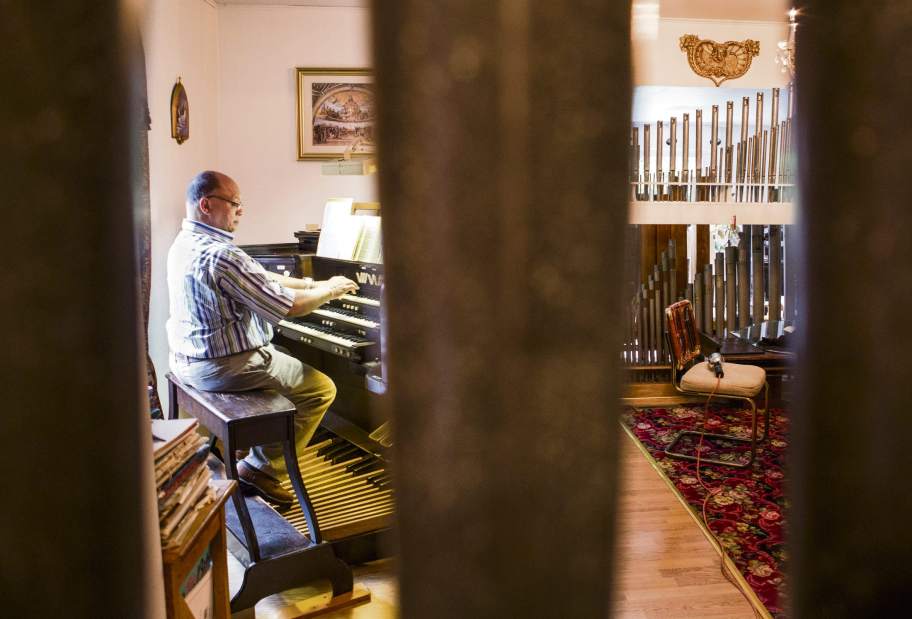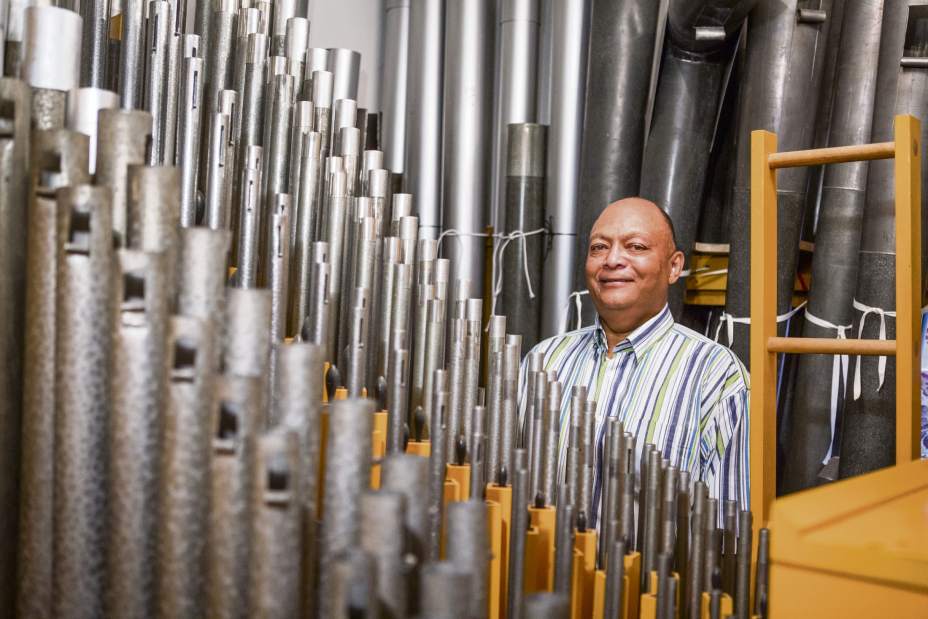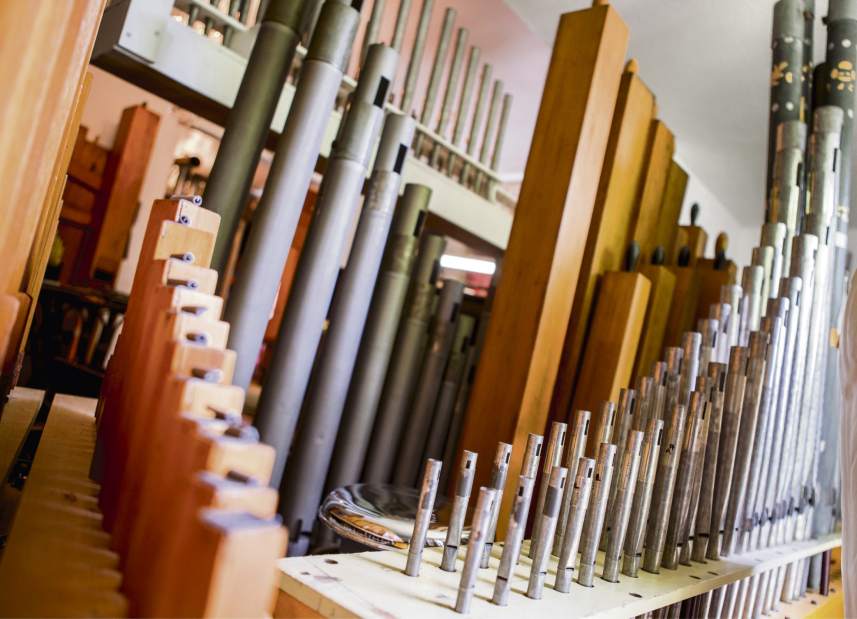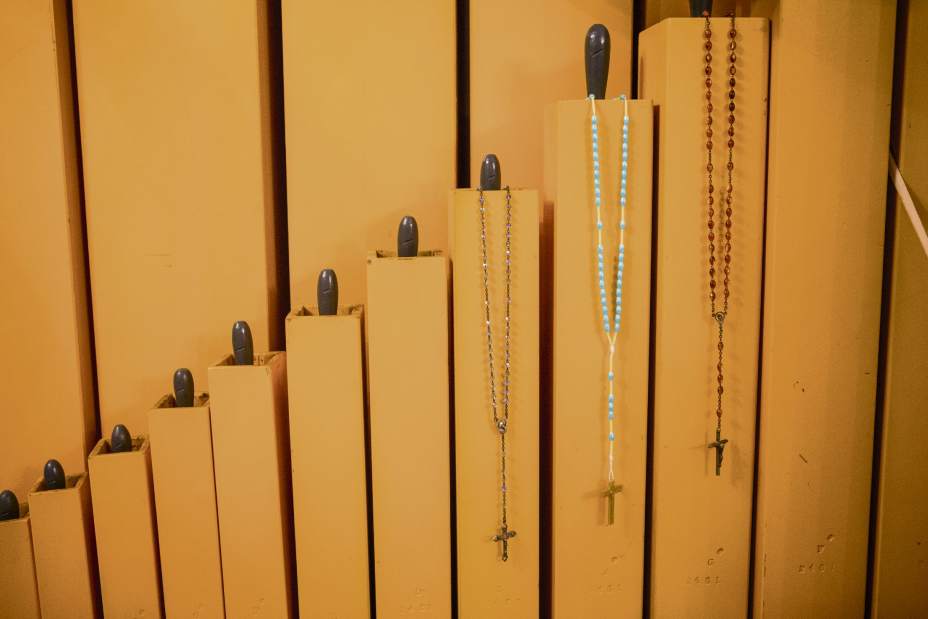Penn Township organist reaches career high note
When Robert Copeland pulls out all the stops, it's not a figure of speech.
It's the literal meaning of the phrase: pulling out the stops to select different tones on the 1927 Skinner organ whose pipes take up most of the main floor of his Penn Township home.
When he reaches the climax of a prelude he is practicing for an upcoming church service, you can feel the bass notes in the floor.
Copeland, 68, has spent a career playing and tuning organs and has a deep appreciation for the history of the instruments with which he works.
“When I sit and think about the history behind them, it kind of blows your mind,” he said.
Copeland is the organist at St. John's Harrold Reformed United Church of Christ in Greensburg. He also owns the Jeannette-based Robert Copeland Pipe Organ Co.
“I've been on my own since 1975,” he said. “From a very young age, I had a reed pump organ, and I had a small set of pipes that I connected to it. I left my mother when I was 19, and I served a 10-year apprenticeship with several organ companies.”
Born in Charlottesville, Va., Copeland and his family moved between Virginia and Western Pennsylvania. As a child living on Broad Street in Pittsburgh's East Liberty neighborhood, he recalls being spellbound by the organ at St. James AME Church.
“The pipes had faces painted on them,” he said. “To me, from a distance, it always looked like the face was sticking its tongue out at you. I went nuts for pipe organs when I saw that.”
In learning to play, Copeland studied under world-renowned organist Homer Wickline, who played free Sunday organ recitals throughout the 1970s and early 1980s in the Wilkinsburg and Braddock areas.
Copeland estimates that he has worked on 1,500 organs, including at the Linden Hall mansion in Dawson; the Aeolian organ at Central Baptist Church in Pittsburgh's Hill District, which was given to the church by the Mellon family; the 1905 Möller organ at First Methodist Episcopal Church in Beaver Falls, which was purchased by Andrew Carnegie; and in 2008, the Skinner organ at Carnegie Music Hall in Oakland.
“It was like a mountain climber reaching the top of Mt. Everest,” Copeland said of working at Carnegie Music Hall. “I work mainly on church organs now, but working on that was the love of my life.”
Copeland performed three of eight proposed renovation phases on the Carnegie Hall organ, which has four keyboards and more than 140 sets of pipes, or ranks.
“They wanted me to photograph everything I was doing because I was told they were going to fundraise so I could keep working,” he said. “But after the third phase, they stopped it, the former president moved on, and while I've tried to contact them to keep the work going, I haven't heard anything.”
Taylor Miller, owner of Taylor Miller Organ Builders in York, met Copeland about 15 years ago.
“We definitely both respect the history, the labor and the time that went into making these organs,” Miller said. “It's just a shame when people kind of dumpster them. As churches are being sold, the trend of contemporary worship often moves away from using the pipe organ, and too often they get trashed.”
Copeland won't stand for it in his current church.
“We use the organ for everything,” he said. “We're not going to use a keyboard or any of what I call ‘tinker toys' — the guitars and drums and other instruments a lot of churches use in contemporary worship these days.”
When Copeland's home fills with the sound of his organ, it's easy to see why he relegates other instruments to second-tier status: each stop makes the sound fuller, brighter and deeper as blowers, electro-pneumatic air pressure, electromagnets and the other thousands of parts work in concert to create a wall of sound.
All of those parts, however, can make regular organ maintenance an expensive undertaking for churches.
“Organs need tuned about four times a year: April for Easter, September, December for Christmas, and June,” he said. “But you used to get calls to tune it up for a funeral, and especially before a wedding. Today? I have people who don't know a stitch about an organ saying, ‘Well, are you sure it has to be tuned four times a year?' ”
Miller, who has worked on organs for nearly four decades, said Copeland's work is important.
“It's good for people to know that there are folks interested in preserving this history,” he said.
Copeland is one of them.
“When I started working on the Carnegie Music Hall organ, I would play it a little, and every time people would come poking their heads around the corner and saying, ‘We didn't know this organ would ever play again,' ” he said. “I'm happy that I was able to at least stabilize it.”
Many churches, over the years, have replaced older pipe organs with more modern, electronic organs or keyboards. Copeland said he considers that a crime.
“There's so much history there. You're talking about an acoustical instrument,” he said. “When you hear it, how could you compare it to the sound you get from a paper speaker? This is supposed to be a pure, wonderful art.”
Patrick Varine is a Tribune-Review staff writer. Reach him at 724-850-2862 or pvarine@tribweb.com.




